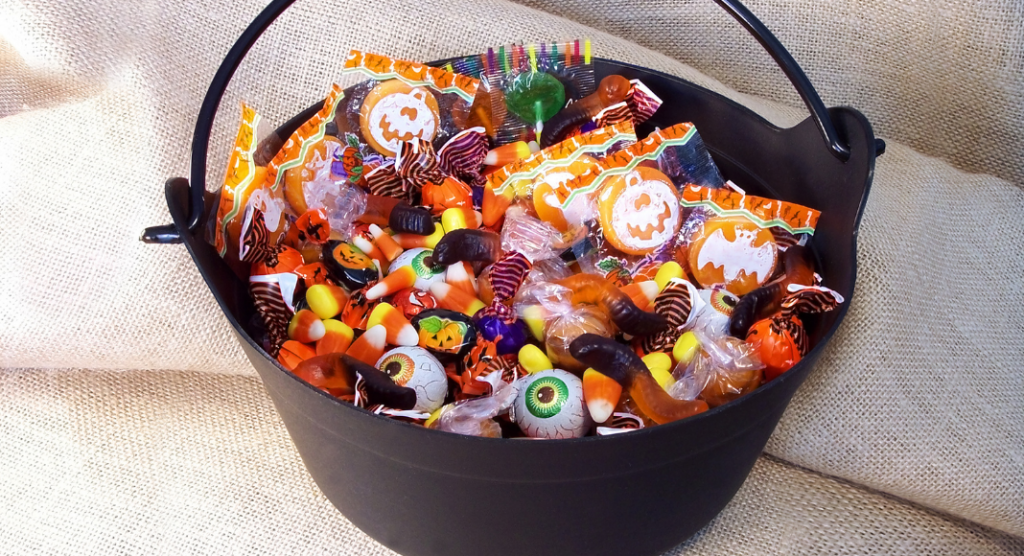 Halloween is when many kids (and adults) like to engage in scares for fun. Haunted houses, spooky costumes, scary movies, and being terrified are part of the seasonal festivities for many. But for some kids and parents, Halloween is scary for a whole different reason. And not in a good way.
Halloween is when many kids (and adults) like to engage in scares for fun. Haunted houses, spooky costumes, scary movies, and being terrified are part of the seasonal festivities for many. But for some kids and parents, Halloween is scary for a whole different reason. And not in a good way.
Any avid reader of Westchester County Mom probably already knows why. My child has food allergies (so do I, but as an adult with a single, top 8 food allergy, I’ve found effective ways to manage), and Halloween is filled with hazards. Chief among the concerns is all that candy from Trick or Treating. But who gives out unwrapped candy anymore? Why would food allergy families be scared if the candy is contained? Not to mention, kids won’t eat that candy anyway with appropriate supervision! What type of parent lets their kid dig into the candy without at least looking it over?!
Hold on, sanctimommies! This has nothing to do with lack of supervision or me being an overbearing parent, I promise (though even if it did… it is none of your business….sorry, not sorry!). Why be concerned, then?
This is why.
1. Candy wrapped in unsealed wrappers.
Hershey’s Kisses. Reese’s Peanut Butter Cups (the kind in the foil). You know, anything in a bit of foil? These candies are wrapped but not sealed. Open a bag, and you will find candy bits at the bottom. Even if my child doesn’t take one of these treats, if you mix them with sealed candies, food proteins can transfer. And it only takes on rogue protein to kill someone with food allergies.
2. Broken wrappers on sealed candies contaminate the rest of the bunch.
Even in sealed candy packages, you are bound to wind up with some candy bouncing around in the bag. That, in turn, contaminates all the wrappers and then anything else in that candy bowl. See the end of point one. It is also worth noting that many children react from skin contact with an allergen or touch their hands to their noses, eyes, or mouth. The only way to remove allergen proteins is to wash them off manually. This means any protein on those wrappers could cause a life-threatening reaction.
3. No safe candies at your house.
Yes, I will take unsafe candy away from my child, be it a choking hazard, a food allergy hazard, or unsafe for another reason. But who wants to upset their child? Yes, as parents, sometimes it is necessary to keep them safe. But I’d love to avoid it as much as possible.
4. Older kids with food allergies may not have as much supervision.
My child is young enough to be under my watchful eye (or the eye of another guardian who knows about his allergies). But as kids get older, they trick or treat on their own or go to events with food. And that is when mistakes happen. You are telling me your child has never made a mistake or done something risky? Or that their friends have never done so?
Food allergy parents work hard to teach their kids how to be safe. But mistakes can and do happen anyway. One child eats unsafe food and then grabs their friend’s phone without handwashing. That friend, who has food allergies, grabs their phone back. Allergic proteins get on their skin, and that is all it takes. People with food allergies can have life-threatening reactions to skin contact (or even breathing air with allergic proteins). We experienced this last Christmas Eve in my own home.
Kindness and preparation can go a long way in keeping kids like mine safe. So, what are some things you can do to help make Halloween more inclusive?
5. Offer food and nonfood treats.
Keep them in separate bowls. Just because a candy is nut-free doesn’t mean it is allergen-free. Someone can be allergic to nearly anything, including ingredients in allergy-friendly food treats. Therefore, it is better to offer nonfood items rather than the “allergy-friendly” options (You can offer these, too, but keep them separate from the regular candy and nonfood treats to avoid cross-contact).
Offering nonfood treats isn’t just great for kids with food allergies. Many medical conditions make food a challenge (diabetes, FPIES, intolerances, EoE, and IBD, just a few among them). Some candies are choking hazards for young children. And some kids may prefer nonfood treats over candy. Many friends report that their nonfood goodies disappear quicker than the candy! Don’t forget, if you are offering nonfood trinkets, put a teal pumpkin on your doorstep and hang signs from FARE’s Teal Pumpkin Project to advertise you are an inclusive house.




















